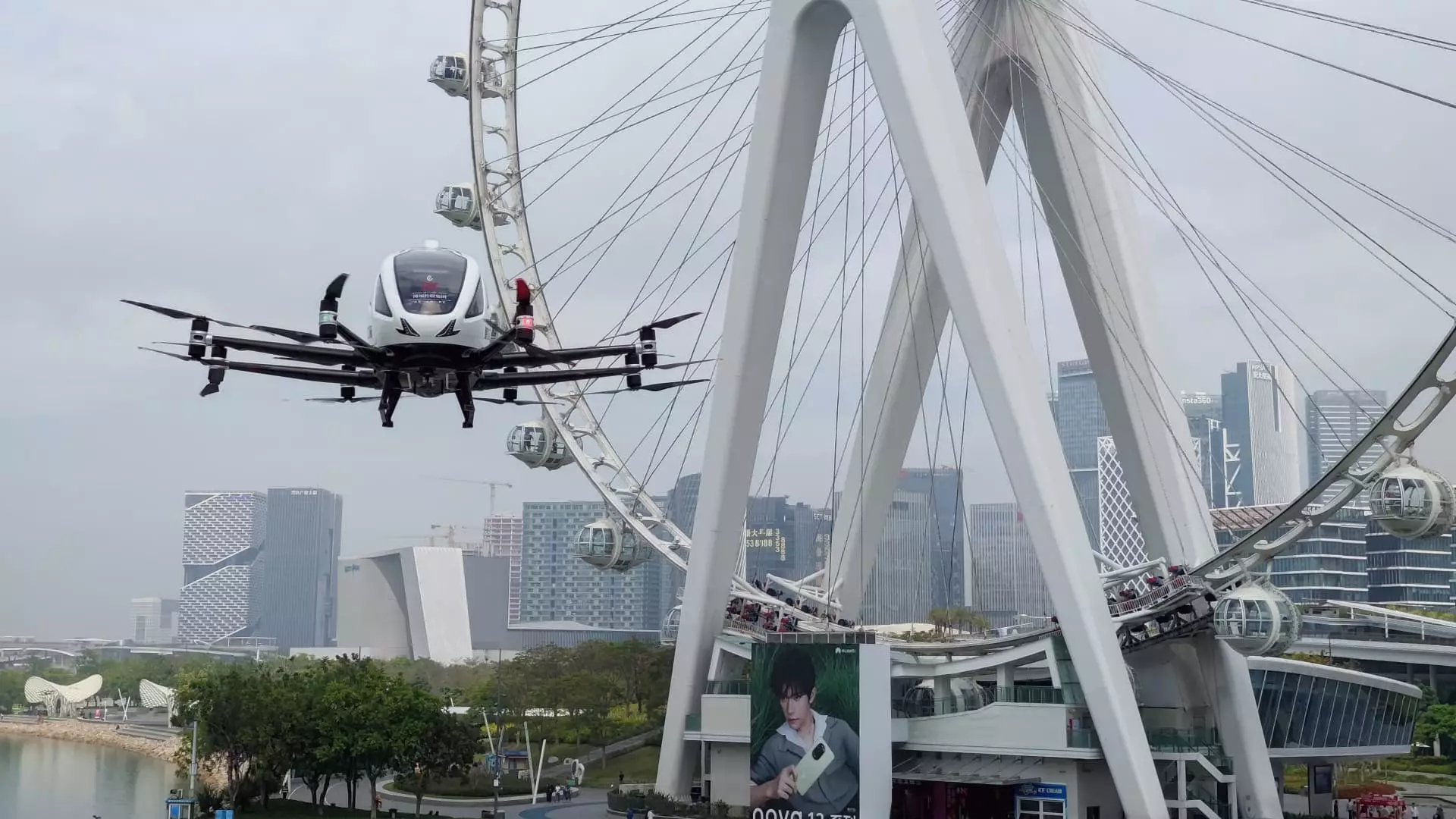In the ever-evolving landscape of technology and transportation, the emergence of flying vehicles represents a significant leap forward. While other nations grapple with regulatory hurdles, one company has risen to the forefront: Ehang, based in China. This pioneering firm has successfully navigated the intricate web of aviation regulations to gain certification for its electric Vertical Take-Off and Landing (eVTOL) aircraft, a feat that may redefine urban air mobility. With their ability to transport passengers for leisurely explorations, Ehang is not merely a player in the field; it stands poised to dominate the burgeoning market—at least in China.
Ehang’s certification by the Civil Aviation Administration of China marks a pivotal moment. It symbolizes the Chinese government’s commitment to advancing its “low-altitude economy,” a strategic initiative designed to encourage innovation and investment in aerial transport. At a time when the U.S. Federal Aviation Administration is still developing its certification protocols, China’s proactive measures highlight a significant disparity in how these two global powers approach technological advancements.
Market Dominance Backed by Acceleration in Adoption
A critical analysis of market trends indicates that Ehang is not merely lucky; it operates under conditions that grant it a near-monopoly within China. Bank of America analysts project that Ehang could maintain a staggering 100% market share through 2025 to 2027. As the regulatory framework in China is notoriously stringent, new entrants face daunting obstacles—most notably the airworthiness process, which acts as a strong barrier to competition. In a country where innovation is often state-supported, this arrangement is particularly advantageous for Ehang, as they can leverage national policy to bolster their operational growth.
Additionally, the projected revenue growth of over 103% by 2025 is not just a number; it signifies that Ehang is capitalizing on the tourism sector, aiming to place their eVTOLs at key attractions around the country. Local governments have already begun to prepare for this new form of transportation through infrastructure investments and subsidies, showcasing a coordinated effort to entice consumers and tourists alike.
The Financial Prospects: A Measured Approach
When it comes to pricing, Ehang’s 216-S model, offered at approximately $330,000 in China and $410,000 internationally, is positioned as a more affordable alternative compared to competitors like Joby Aviation, whose four-seat S4 is priced at $1.3 million. This competitive pricing may facilitate broader market penetration, further entrenching Ehang’s dominant position. The anticipated market size—estimated to accommodate up to 80,000 units for tourism alone—further underscores the growth trajectory that could be realized.
While some may argue that these projections are overly optimistic, they stand to reason within the context of urbanization and the increased demand for efficient transportation methods. The potential for future revenue streams, especially in the urban air taxi sector, indicates that Ehang’s ambitions are both visionary and practical, opening new avenues for investment and profitability.
The Hidden Dangers and Accountability Risks
Yet, amid this promising landscape, caution is warranted. Ehang may find itself teetering on a fragile precipice. The analysts have issued a clear warning: any accidents or incidents involving passenger injuries could inflict severe reputational damage. In industries as sensitive as aviation, public perception can mean the difference between success and downfall. The need for rigorous testing and commitment to safety cannot be overstated, as these factors will ultimately determine the pace at which society accepts eVTOL technology.
Moreover, any failure in operational efficiency or safety measures could not only hamper Ehang’s growth but also slow the entire eVTOL sector’s acceptance in mainstream transport. The company’s future could ride on a razor’s edge between technological marvel and public skepticism.
The Urban Air Taxi Vision: A Future Yet to Be Realized
As we peer into the future, the urban air taxi market presents an alluring potential. Bank of America estimates that demand could eventually reach as high as 200,000 eVTOL units. This is not so much a dream but a calculated projection based on the existing ride-hailing and taxi markets. For Ehang, this represents not just a new revenue opportunity but a chance to solidify its legacy in aviation history.
However, this potential remains tethered to realities like regulatory frameworks, safety protocols, and consumer acceptance. The journey toward a widespread adoption of air taxis will necessitate an unwavering resolve from innovators and regulators alike to maintain safety and accountability. Therefore, while Ehang has opened the door to a new frontier in urban mobility, the path forward is fraught with both opportunity and risk, reminding us that innovation must always heed the lessons of responsibility.

